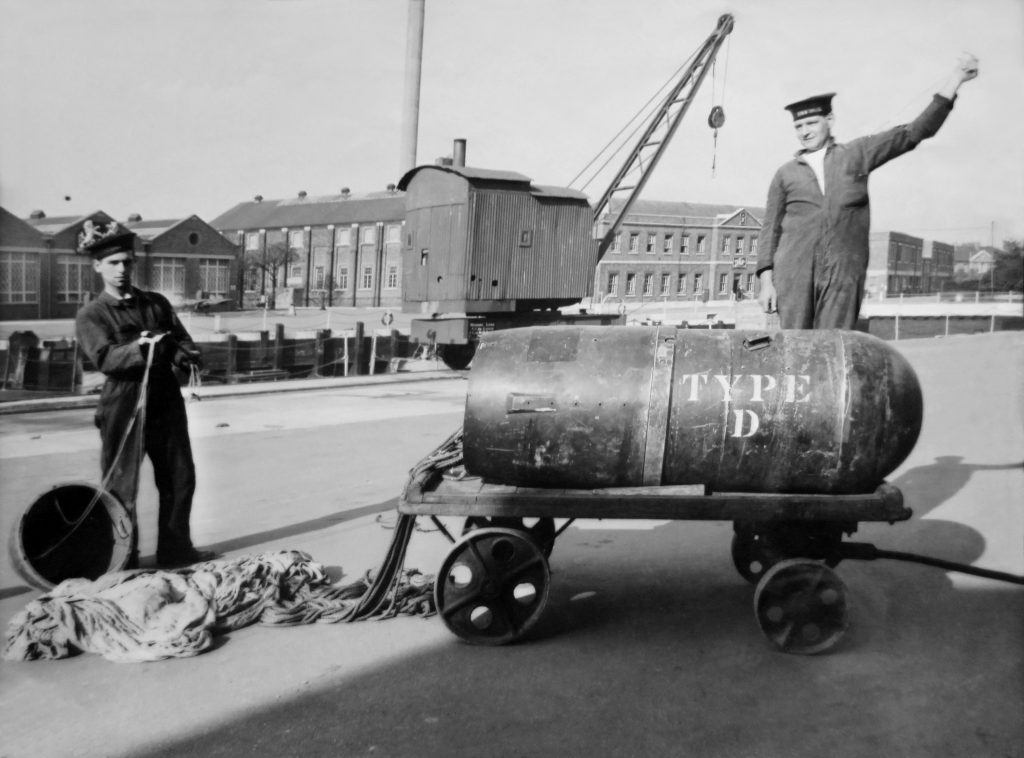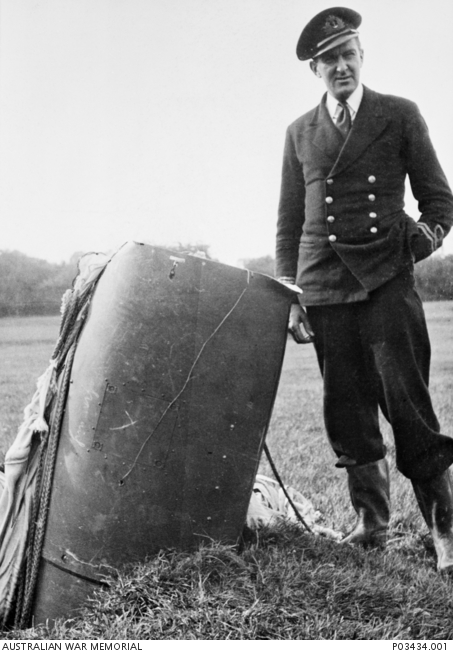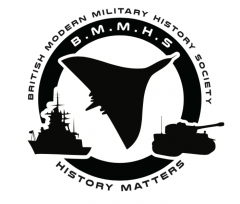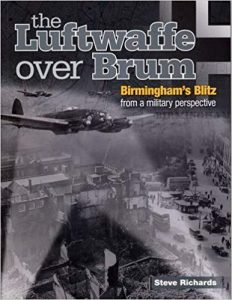Bomb Disposal: Just doing his job.....
This is an article kindly provided by Steve Richards

Birmingham takes a hammering
It was 2:55am when the phone rang in the lodging room on Half Moon Street, London W1. Outside it was bitterly cold; the frost was giving a crisp and deepening coating to the slush of dirty snow in the street. It was barely any warmer in the room where the man reached out his arm from under the bed covers to pick up the handset. He propped himself on one elbow and grunted an acknowledgement into the mouthpiece.
A voice at the other end said, ‘Birmingham’s taking a hammering and Jerry has dropped parachute mines all over the place, a dozen of which haven’t gone off… yet. Get your bag of tools, a car has been organised for you.’
So started the day of 12 December 1940, for Sub-Lieutenant Hugh Syme of the Royal Naval Volunteer Reserve. Other naval officers were receiving similar calls which resulted in a rendezvous of 8 officers and 14 men, spread across seven cars, congregating at the White Hart in St Albans. The plan was to breakfast there and, once everyone had arrived and eaten, move in convoy northwards to Birmingham.
It is doubtful that Syme’s churning stomach would have allowed him to eat much. This was the 37 year-old’s first job since joining RMS (Rendering Mines Safe), a specialist unit within the Royal Navy.
Departure from the White Hart
It was after eight o’clock that the convoy of cars set off from the White Hart. They were under orders to travel at high speed and horns were used to warn other traffic of the priority to be given to the speeding saloons. The drivers were professionals, and they needed to be; black frost was an ever present hazard. The cars arrived in Birmingham, but only the one which contained Syme had escaped mishap.


"Take this one. It’s in a suburb called Smethwick...."
It was a policeman who directed the convoy through the blocked streets to the Council House where the ARP Report and Control Centre was located. The city had just suffered its longest raid of the war, lasting 13 hours.
Lt Miller, Syme’s senior, had established himself in a corner and, handing his men hot coffee, briefed them as to their assignments. Miller pointed to a pinned flag on the wall map and said to Syme, ‘ Take this one. It’s in a suburb called Smethwick and it’s outside the local Council House.’
Birmingham was a mess. Officially, road and rail access in and out of the city was deemed to be dislocated. What the Royal Navy visitors smelled, was a mixture of brick dust, soot and smoke. What they saw was rubble, hosepipes lying everywhere, iced over pools of water, smoking buildings, dazed people and officials doing their best to inject some organisation into what seemed like chaos.
"if you need me, I’ll be at the barricade. Good luck old boy!"
It was an anxious Syme that arrived at the barricade some distance from the Smethwick Council House. The time was 11:30am. Syme, his bag man and his mentor, named Gilbert Stubbs, proceeded beyond the barrier and headed into the deserted area. The mine had wedged itself by penetrating two feet into the paving flagstones which had turned inwards and kept the mine fairly upright.
The two naval officers and one rating made a lonely band. The area had been cleared across a 400 yards radius. Stubbs ordered the rating to leave the bag and return to the barricade. Having assessed the situation, he told his Sub-Lieutenant not to remove the fuse or time clock by hand. Instead he was to attach a line and, using pulleys, run it to the dug-out which was located 35 yards away around the corner.
Stubbs smiled at Syme, ‘if you need me, I’ll be at the barricade. Good luck old boy!’ And with that, he marched off.
Defusing the mine
When Hugh Syme had signed up for the Australian Navy less than 18 months ago he would never have guessed that he would find himself here, alone, in a freezing cold, deserted urban district named Smethwick, a place he had never heard of until an hour ago. Completely alone (or so he thought); alone with a mine that could obliterate him in a second and devastate the buildings he was now looking at. He drew in the cold air through his nostrils and walked directly towards the torpedo-shaped object. It was protruding drunkenly out of the icy pavement with its shroud lines reaching up to the telephone wires above.
For the next two hours, Syme worked steadily and, at times, not so steadily on the mine. If he had been permitted to send a postcard home describing his first day in action it might have read as follows:
‘This was my first defusing assignment after my training. I was driven to a barricade near the Council House. It was extremely cold. On my way to the assignment people were calling out “Good luck!” As I got closer to the mine, there was not a soul to be seen. I arranged the tools on the ground and set up a pulley to the telegraph pole and the bomb. My hands were raw with the cold and they stuck to the metal. I attached a cord to the bomb fuse and stretched the cord for 35 yards to a dug-out shelter. I padded the pavement with layers of Hessian where the fuse would fall. The telegraph wires and parachute lines had to be moved. I turned the tap on the bomb fuse and the safety pin popped home. I slowly unscrewed the keeper ring. I tied a knot around the ring. I walked to the dug-out, pulled on the cord and the fuse fell out. I counted to 20. I walked back to the bomb and picked up the fuse. The detonator went into my wallet; my souvenir. Now there was the hydrostatic clock which could have been booby-trapped. I tied a cord around this and repeated the same operation. As I approached the bomb once more, I noticed two young boys playing with the clock. I was totally aghast. They asked me what I was doing. They had been hiding in the bushes for nearly two hours. I shouted at them and they ran away. Then it was all over; the mine was safe. I returned to the barricade and many people ran towards me. I was dragged into a nearby pub.
A very well earned pint
A hat was presented to me brimming with coins and notes. I told them they couldn’t give me money and that I was only doing my job, so they gave me beer instead.’
The Parachute Mine (or Aerial Torpedo)
These weapons were capable of destroying a row of houses with a single blast. The civilian population held the parachute mine in contempt because it was obviously indiscriminate, as it was impossible to aim them onto a given target. As with other German bombs, a sizeable proportion failed to explode.
The Germans adapted anti-shipping sea mines in order that they could be dropped by parachute. These were not the familiar spherical mine with spikes sticking out, but were akin to torpedoes. The parachute allowed little, if any, penetration and, together with the impact fuse, guaranteed maximum blast effect. These Luftminen were either 500kg or 1,000kg, designated LMA and LMB respectively. The LMA was 5 feet 8 inches long and the LMB 8 feet 8 inches.
As the parachute mines which the Luftwaffe dropped on British towns and cities were essentially naval weapons, it fell to the Royal Navy to deal with those which failed to explode. A naval unit operating under the name of Rendering Mines Safe, allowed careful examination of their design to be carried out. In this way, development of countermeasures could be pursued in order to frustrate the effect of those dropped in the sea lanes around Britain’s coast and in her river estuaries.
Lt Hugh Randall Syme GC GM and Bar
Born on 20 February 1903 in Melbourne, Australia, Syme studied Civil Engineering, Science and Industrial Management. The Syme family owned The Age newspaper which his grandfather had started and for whom his father worked. For a time, prior to the outbreak of war, Hugh Syme also worked for The Age.
Being a yachtsman he volunteered for service in the Royal Australian Navy and was posted to Britain. Syme joined a small unit of volunteers whose job it was to disarm and recover German mines. Within a week of him dealing with the Smethwick mine he was promoted to Lieutenant. The following June he received the George Medal after his work on a series of mines.
Further exploits
In all, Syme was responsible for rendering safe some 19 mines. Two assignments in particular stand out. In April 1941 he disarmed a mine that had penetrated 15 feet into stinking clay which threatened to breach an embankment alongside the reservoir at Primrose Hill, London. He burrowed into the embankment in order to get at the mine side on. This filthy and dangerous job took Syme four days. Had the mine exploded the torrents of water would have been devastating for the homes below. For this, he was awarded a bar to his George Medal in June 1942. The following November, and now nearly 40 years of age, Syme had to suspend himself upside down in a mud hole off the coast of Weston-super-Mare in order to deal with a previously unknown type of German mine.
Awarded the George Cross in 1943
He was awarded the George Cross in 1943 and so became the most decorated Australian naval officer up until that time. In January 1943, following the death of his father and uncle, he returned home to become a trustee of the family business. He attempted to return to Britain in order to carry on his work but the Royal Australian Navy prevented this, wanting him to set up a bomb disposal unit in Australia.
He left the navy in 1944 in order to manage The Age. Queen Elizabeth II awarded him the Coronation medal in 1953. He declined a knighthood, however, on the grounds that he was simply doing his wartime job. He remained in newspapers and broadcasting until he died following a brain tumour on 7th November 1965. He was aged 62.
Click to see full BMMHS event listing pages.
Contact us at info@bmmhs.org
Copyright © 2024 bmmhs.org – All Rights Reserved
Images © IWM & NAM



